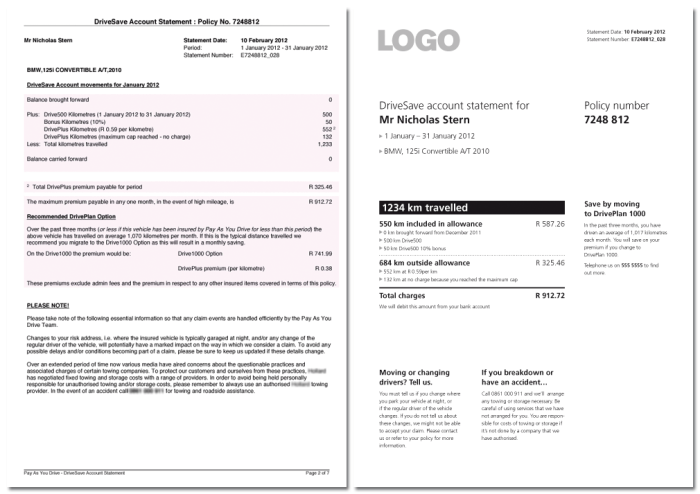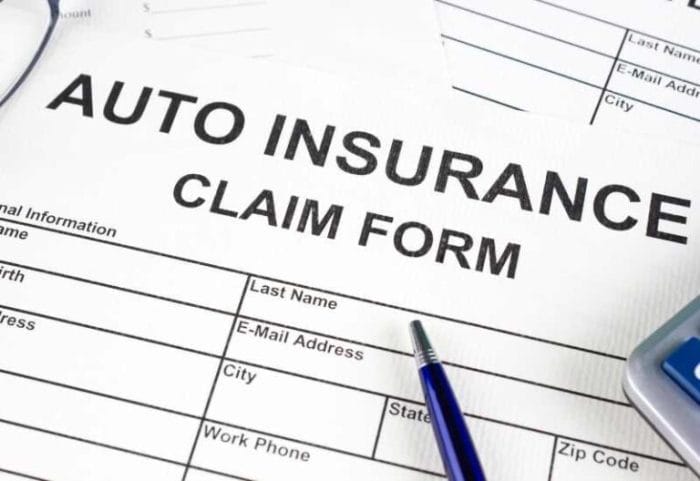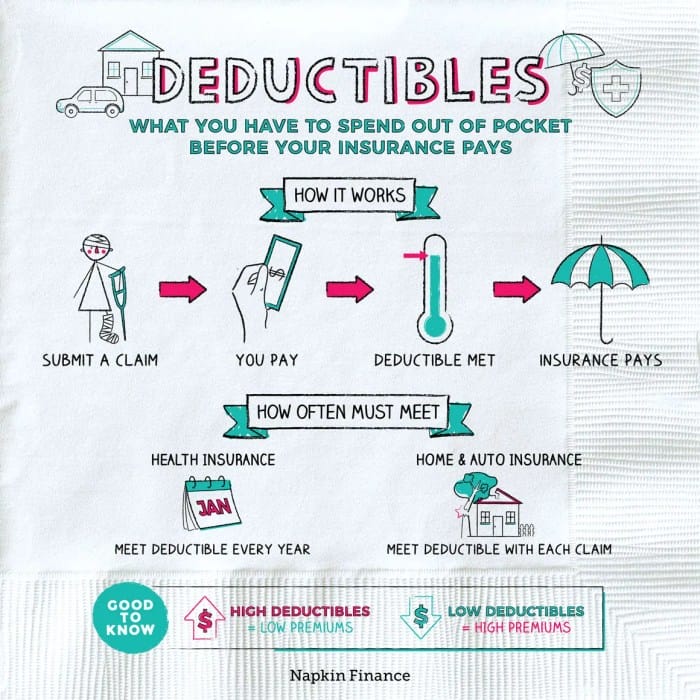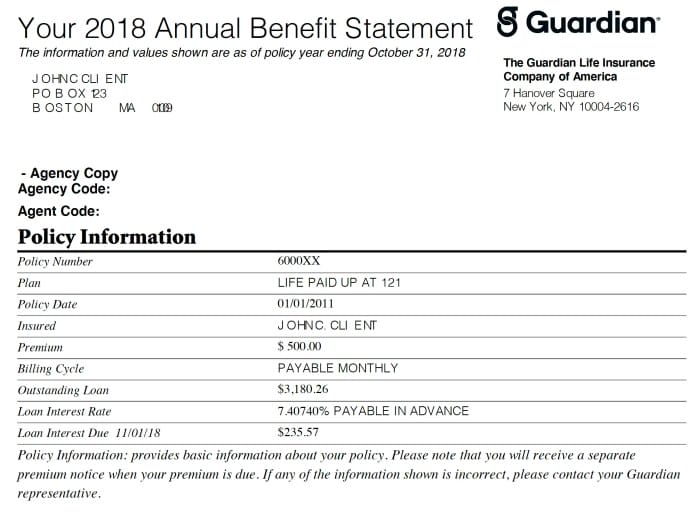In the unfortunate event of an auto accident, navigating the insurance claims process can be daunting. Providing a clear and comprehensive statement to your auto insurance company is crucial for a smooth and successful resolution. This guide delves into the intricacies of crafting an effective auto insurance statement, ensuring that your voice is heard and your claim is handled efficiently.
With meticulous attention to detail, we’ll explore the significance of organization, clarity, and adherence to policy terms. We’ll provide practical tips for identifying relevant information, organizing it systematically, and presenting it in a professional and objective manner. Additionally, we’ll discuss the importance of supporting documentation and effective communication with your insurance company throughout the process.
Guidelines for Effective Statement Preparation
Accurately organizing and documenting information is of paramount significance when preparing a statement for your auto insurance. This meticulous approach ensures that the information presented is reliable, comprehensive, and easily understandable by the insurance company. Clarity and conciseness are also crucial; avoid unnecessary jargon or convoluted language that may hinder comprehension.
Structuring Information
Present information in a structured and organized manner, utilizing a logical flow that enhances readability and comprehension. Consider employing bullet points, numbered lists, or tables to present complex information in a clear and concise format. This structured approach facilitates easy navigation and understanding of key points.
Understanding Insurance Policy Terms and Conditions

Familiarizing yourself with your insurance policy’s terms and conditions is essential for effective communication with your auto insurance provider. A clear understanding of policy details ensures accurate and relevant information in your statement.
Policy Terms and Their Implications
Understanding common insurance policy terms and their implications is crucial. These terms define the coverage, exclusions, and responsibilities of both the insurance company and the policyholder. Some key terms include:
- Coverage Limits: The maximum amount the insurance company will pay for a covered loss.
- Deductible: The amount the policyholder is responsible for paying before the insurance company begins to pay.
- Exclusions: Specific events or circumstances that are not covered by the policy.
- Premium: The amount the policyholder pays to the insurance company for coverage.
- Policy Period: The length of time the policy is in effect.
By understanding these and other relevant terms, you can provide accurate and relevant information when giving a statement to your auto insurance provider. This helps ensure that your claim is processed smoothly and efficiently.
Identifying Relevant Information

Providing accurate and relevant information in an auto insurance statement is crucial for a successful claim process. Insurance companies typically request specific details to assess the situation, determine liability, and process the claim efficiently.
The following types of information are commonly requested in an auto insurance statement:
Personal Information
- Name, address, and contact information of the insured party
- Driver’s license number and expiration date
- Policy number and insurance company name
Vehicle Information
- Make, model, and year of the insured vehicle
- Vehicle identification number (VIN)
- License plate number
- Current odometer reading
Accident-Related Information
- Date, time, and location of the accident
- Description of the accident, including the circumstances leading up to it
- Names and contact information of other drivers involved
- Names and contact information of any witnesses
- Police report number (if applicable)
- Photos of the accident scene and vehicle damage
- Medical records related to injuries sustained in the accident
Gathering supporting documentation for your claim is essential. This may include:
- Copies of the police report
- Medical records and bills
- Estimates for vehicle repairs or replacement
- Witness statements
- Photographs of the accident scene and vehicle damage
Providing comprehensive and accurate information, along with supporting documentation, helps the insurance company evaluate your claim accurately and expedite the claims process.
Organizing Information

When preparing a statement for your auto insurance company, a well-organized and structured approach is essential for clarity and effectiveness. This ensures that the information is presented in a logical and easy-to-understand manner, helping the insurance company to quickly grasp the facts and circumstances of your case.
Categorizing and Prioritizing Information
Categorize the information into relevant sections or topics. This will make it easier for the insurance company to locate specific details and understand the context of your statement. Prioritize the information by placing the most important or relevant details at the beginning of each section or topic.
Maintaining Consistency
Maintain consistency in the presentation of information throughout your statement. Use consistent formatting, font, and style to create a cohesive and professional document. This will make it easier for the insurance company to read and understand your statement.
Writing Style and Tone

When writing your auto insurance statement, it is crucial to maintain a professional and objective tone. Your statement should be clear, concise, and factual, avoiding emotional language and personal opinions.
Professionalism and Objectivity
- Using a professional writing style demonstrates your seriousness and credibility.
- Objectivity ensures that your statement is based on facts and not influenced by personal biases.
Neutral and Unbiased Tone
- Maintaining a neutral and unbiased tone helps convey information accurately and without prejudice.
- Avoiding emotional language prevents your statement from becoming confrontational or argumentative.
Avoiding Emotional Language and Personal Opinions
- Emotional language can cloud the facts and make it difficult for the insurance company to assess the situation.
- Personal opinions are irrelevant to the insurance claim and may be disregarded.
Addressing Specific Questions
Effectively addressing each question or request for information is crucial in providing a comprehensive and accurate statement to your auto insurance company. Thorough responses demonstrate your attention to detail and willingness to cooperate with the investigation process. Avoid leaving any questions unanswered or providing vague or incomplete information, as this may lead to delays or misunderstandings.
Answer Concisely and Informatively
- Be direct and to the point: Provide concise answers that directly address the question without unnecessary elaboration or rambling.
- Include relevant details: While brevity is important, ensure your answers are informative and contain all the necessary details to provide a clear understanding of the situation.
- Avoid irrelevant information: Stick to the topic and avoid including irrelevant or tangential information that may confuse or distract the reader.
Review and Proofread

After drafting your auto insurance statement, it is crucial to dedicate time to reviewing and proofreading it thoroughly. This step is often overlooked, but it holds immense importance in ensuring the accuracy and effectiveness of your statement.
Identifying and Correcting Errors
Begin by reading through your statement multiple times, paying meticulous attention to details. This will help you identify errors in grammar, spelling, and punctuation that may have slipped through during the initial writing process. Use standard grammar and spelling checkers, but do not rely solely on them, as they may not catch all mistakes.
Ensuring Clarity and Consistency
While proofreading, scrutinize the statement for any inconsistencies or ambiguities. Ensure that the information provided is clear, concise, and consistent throughout the document. If you come across any vague or ambiguous statements, revise them to make them more direct and easily understandable.
Supporting Documentation

Attaching relevant supporting documentation to your auto insurance statement is crucial in substantiating your claim and ensuring its prompt processing. These documents provide concrete evidence to support your statements and help the insurance company assess the validity and extent of your claim.
Types of Supporting Documentation
The type of supporting documentation required will vary depending on the nature of your claim. Common types of supporting documentation include:
- Police Report: In the event of an accident, a police report serves as an official record of the incident. It provides valuable information such as the date, time, and location of the accident, as well as the names and contact information of the parties involved.
- Medical Records: If you or any passengers sustained injuries as a result of the accident, medical records are essential in documenting the nature and extent of the injuries. These records should include medical bills, doctor’s notes, and any other relevant medical documentation.
- Repair Estimates or Invoices: If your vehicle was damaged in the accident, repair estimates or invoices from a qualified auto repair shop can help determine the cost of repairs.
- Photos: Photos of the accident scene, vehicle damage, and any visible injuries can provide visual evidence to support your claim.
- Witness Statements: If there were any witnesses to the accident, their statements can corroborate your account of the incident.
Importance of Clear and Organized Documentation
When submitting supporting documentation, it is essential to ensure that all documents are clear, legible, and organized. This will make it easier for the insurance company to review and assess your claim. Here are some tips for organizing your supporting documentation:
- Use a logical order: Arrange your documents in a logical order, such as chronological order or by type of document.
- Label each document: Clearly label each document with its type and date.
- Make copies: Make copies of all supporting documentation before submitting them to the insurance company. Keep the originals for your records.
Giving the Statement

Introductory paragraphWhen it comes to filing a claim with your auto insurance company, providing a clear and accurate statement is crucial. Different insurance companies may have specific requirements for submitting a statement. It’s important to understand the options available and choose the appropriate submission method.
Submitting the Statement
There are several methods for submitting an auto insurance statement:
- Online: Many insurance companies allow you to submit a statement online through their website. This is a convenient option if you have access to a computer and internet connection.
- Email: You can also submit a statement via email. Make sure to include all the necessary information and attach any supporting documents.
- Fax: For companies that accept faxes, you can send your statement by fax. Ensure you have a confirmation report to prove the successful transmission.
- Mail: You can send your statement through the mail. Allow enough time for the delivery of your statement and any supporting documents.
- Phone: In some cases, you may be able to provide a statement over the phone. This is usually for simple claims or inquiries.
Submission Deadlines and Requirements
It’s important to meet the submission deadline set by your insurance company. Late submissions may affect the processing of your claim. Make sure to follow any specific submission requirements, such as formatting guidelines or supporting documents needed.
Follow-Up and Communication
Maintaining open and effective communication with your insurance company is crucial throughout the claims process. By doing so, you can ensure that your claim is handled promptly and accurately, and you receive the benefits you are entitled to.
Following Up on Claim Status
- Regularly check the status of your claim by calling or emailing your insurance company’s customer service department.
- Be proactive in reaching out to your insurance company if you have not heard back within a reasonable timeframe.
- Keep track of all communication, including dates, times, and names of individuals you spoke with.
Responding to Additional Requests
- Be prepared to provide additional information or documentation if requested by your insurance company.
- Respond promptly to any requests for information to avoid delays in processing your claim.
- If you are unable to provide the requested information immediately, communicate with your insurance company and explain the situation.
Providing Further Clarification or Documentation
- Be prepared to provide further clarification or documentation if your insurance company needs it to understand your claim fully.
- Gather any relevant documents or records that may support your claim, such as medical bills, police reports, or repair estimates.
- Organize your documents neatly and chronologically to make it easy for the insurance company to review.
Last Recap

Remember, a well-crafted auto insurance statement is not merely a collection of facts; it’s a compelling narrative that advocates for your rights and interests. By following the guidelines Artikeld in this guide, you can confidently navigate the claims process, ensuring a fair and timely resolution.
Common Queries
Q: What are some common mistakes to avoid when writing an auto insurance statement?
A: Common pitfalls include providing irrelevant or unnecessary details, using emotional language or personal opinions, and failing to address specific questions thoroughly and accurately.
Q: How can I ensure that my auto insurance statement is clear and concise?
A: Strive for clarity by using simple and direct language, avoiding jargon or technical terms. Additionally, maintain conciseness by focusing on the most relevant information and avoiding unnecessary details.
Q: What types of supporting documentation should I include with my auto insurance statement?
A: Common supporting documents include police reports, medical records, repair estimates, and photographs of the accident scene. Ensure that all documentation is clear, legible, and organized.



